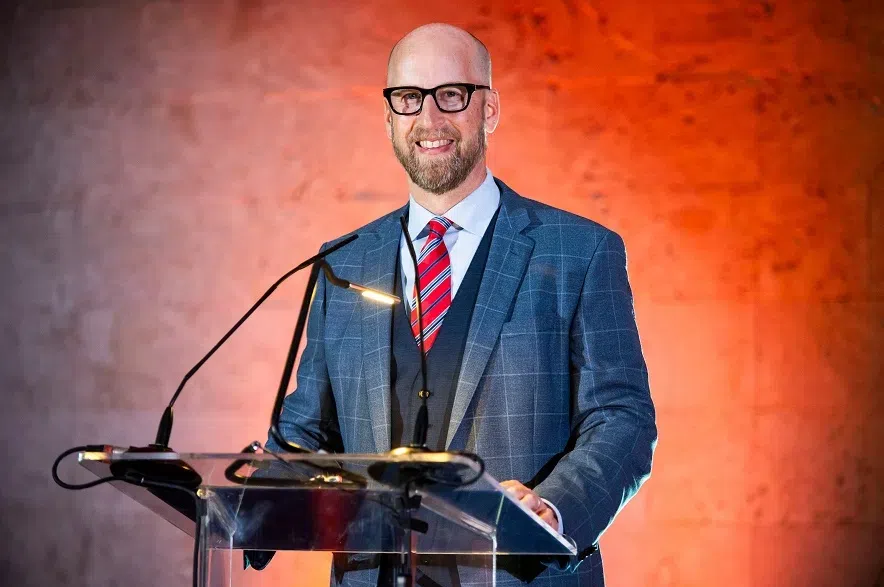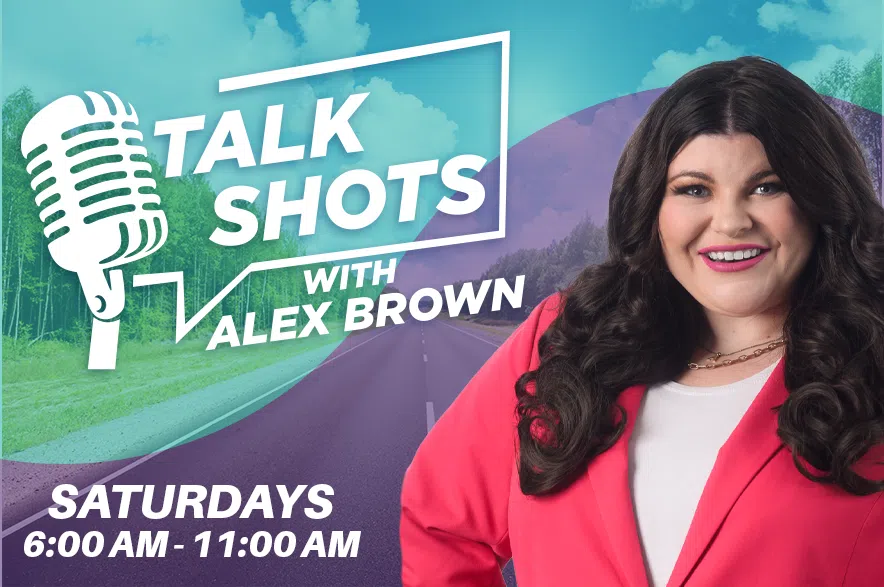Stewart Johnston is now officially in his role as the new CFL Commissioner.
The former TSN executive was introduced as the 15th CFL commissioner on Thursday. He takes over the role from Randy Ambrosie, who had retired from the role.
Johnston joined The Green Zone on Friday to discuss plenty of topics on the future of the CFL, including the upcoming media rights deal that will need to be negotiated and how to keep the league strong.
Listen to Stewart Johnston on The Green Zone:
The following transcript has been edited for length and clarity.
Green Zone: You’ve been brought up watching the Canadian Football League. You’ve been around the Canadian Football League with TSN before taking this job. What is it like to walk into this office, and the pressure that comes along with it?
Johnston: It’s a little bit of everything, a mix of emotions. It starts with excitement. I have been a fan of this league and a fan of this sport for so long. Some people have asked, ‘Is this a dream job for you?’ I said, ‘How could it be a dream job? I never would have dreamt about having this job.’ Now that I’m here, some of it is surreal. For example, on my first day, about an hour before the media conference, the staff here at the league office handed me a football with my signature engraved on it. And I thought, ‘Wow, this, this is, this is really something else.’ A little surreal. But the one thing I’m not feeling is pressure. I’m recognizing challenges, but I’m feeling so optimistic and confident about where we’re going to go and where we are coming from that that’s the primary feeling I’ve got.
You said your office is to protect the integrity of the game. So are we done with debates about four-down football, the ratio, the rouge, and where the field goal posts are under your leadership?
Johnston: I’ll start with this year. I promise you, the rouge is here to stay. The rules committee looked at the rouge over the course of the weekend. The rules committee is made up of (general managers) and members from the (Players Association) and obviously office staff and so forth and (the rouge is) here. What I commit to is continuous improvement. We will always look for ways to make our game as entertaining as it can be, but under the overarching umbrella of protecting the integrity of the game, and this is what our game is. We live in an era of disruption. I don’t think in any industry in the world, you say we’re never changing. I don’t think that’s a good philosophy, but I can tell you my philosophy isn’t coming in saying we must change. It is simply let’s make sure we’re aware of everything that’s happening as it relates to our audiences, our fan base, what they want, and how we’re going to grow. We will always commit to reviewing that, but that’s where I’ll leave it for there.
Read more:
- Riders announce more key dates, flexible ticket options
- Melfort’s Logan Ferland signs two-year extension with Saskatchewan Roughriders
- The Green Zone: Corey Mace believes foundation has been set for Riders
Where do you see the growth area for entertainment of the Canadian Football League that’s not happening right now?
Johnston: I think it’s actually about taking the incredibly entertaining product that is on the field and making sure we’re distributing it in the right ways and with the right storytelling to reach audiences that may not already be associated with the CFL. I’m talking about younger audiences. For example, if there are partnerships that we can create with social media platforms with a greater ability for storytelling, then let’s do that because the players are incredible, the playmaking is incredible, the games themselves are ridiculously exciting, and most of them are going down to the last three minutes. It’s probably more about how we express the entertainment in as many ways as possible to reach audiences that may not be seeing it right now.
We’ve had a lot of people texting and what they want to ask the commissioner and it was the first one — Stuart comes from TSN. Should we be ready for another exclusive rights deal with TSN going forward with the new broadcast agreement?
Johnston: There are no preconceived notions about what the next broadcast deal will look like. I’ll give you a couple of thoughts though, as we head into that process, which is still probably weeks or months away. One is, I’ll say this with the objectivity I think I can bring, though some may question, (but) TSN and RDS are strong, dedicated, committed partners of the CFL, and have been for an awful long time. I know firsthand that the production crew that works on bringing those games to the Canadian public is world-class in their skills and even greater than that in their passion for the game. So they’re an outstanding group. I think with a long-term partner of any kind in business, I have always treated an incumbent as having the right to have a first discussion. That doesn’t mean anything other than that — the right to have a first discussion. I think that’s only fair when you’ve had a partner for a long time.
Having said all that, I think it’s important to understand what I’m going to think about as we head into the next broadcast deal. Most people think about a broadcast deal and they think about how much money for how many games? That’s certainly important, but I’m looking to optimize the overall deal and thinking about several different key areas or key objectives. The first is to maximize revenue. We think we bring great value with incredible audiences and can serve broadcast partners in many ways with the content that we provide. Reach is important. I do not want us to become and go down into a narrow reach platform where no one can find it. So we’ve got to have some broad reach, at least a balance of that. Finally, what partner or partners can bring us access to some of those audiences we started this conversation talking about. Those underserved audiences, those younger audiences, the more diverse audiences, who can help us take this great game and spread it as far and wide as possible. So that’s what I’ll be looking at, and that’s what this office will be looking at as we head into the next deal, and we’ll look for the greatest balance and try and maximize all of those objectives.
How badly does this league need a streaming option, a streaming partner that’s not linked to a Crave or a TSN+ for extra value in those things? How much does the CFL need to diversify its broadcasting partners? So it’s not just Bell owning it. The NFL and some other leagues have definitely diversified how many partners they have to expose the product to more and more and as many people as possible.
Johnston: That’s true but the NHL has not in Canada. So you’ve seen whether it’s the NHL Canadian deal, the NFL and NBA U.S. deals, which were very quite similar in their in their structure. The NHL deal in the U.S., the MLS deal being a totally different animal. There have been a whole a wide variety of results that have come from those negotiations, including everything with a streamer, everything with linear, and a mix of multiple linears and streamers in between.
I need us to reach the greatest audience and I absolutely agree with your point that we as a community want as many voices talking about our league as possible. Certainly, that will factor into our plans and our strategies.
Why has expansion kind of dropped down the to-do list for you?
Johnston: I would love 10, 11, and 12 (teams) and maybe beyond, so let’s just be clear on that. I think as I start this journey in this role, I want to focus on things I can control. I think about three key areas to really push our league forward. That’s innovation and that’s community, and it’s really kind of thinking about entertainment. We talked a lot about entertainment so I’ve already expressed a few of the things I think we and I can add value as it comes to entertainment to our league. From an innovation standpoint and the development of new technologies and data-enhanced feeds and analytics and more data with our fans so we can have better marketing and innovation in tech as it relates to player safety, those are things we can control. Our league is maybe the best in the world in the way it’s ingrained in the various communities. I want to continue to encourage that. All of those, I truly believe, will contribute to growth and success with the league.
(With expansion,) if a prospective ownership group with an outstanding background and backup comes in with plans that are well-baked, we are going to listen to them, but I don’t think it does us justice to actually spend our resources going to try and find that.
What is your vision for the CFL’s connection to flag football?
Johnston: Let me start by congratulating and thanking the NFL for the efforts and resources that they’ve put in. My first priority is kids playing football. If they’re wearing a jersey that I’d rather they weren’t, I’ll suck it up for now and just be pleased that they are playing football and touching footballsand throwing footballs and catching and just falling in love with the game. That makes me very happy. Now, how do I become happier? Wearing Riders and Stamps and Lions jerseys as opposed to those other ones, I think that’s where we can look to enhance our relationship with Football Canada. We can work more closely with the various stakeholders that run flag in each province, we can work with the clubs where we have clubs in each province, and try and create our programs together. But what I don’t want to see is competing flag football programs. That is a complete waste of resources. I’m very open to, and I have many relationships with the NFL, is to say, ‘Hey, is there a way we actually work together? We both want the same objective of kids playing football.’ After that, we have differing objectives. We want them to grow an affinity for each of our teams and leagues, but I truly think they can be complementary through most of that journey, and that’s how I’d see us driving a strategy forward.











